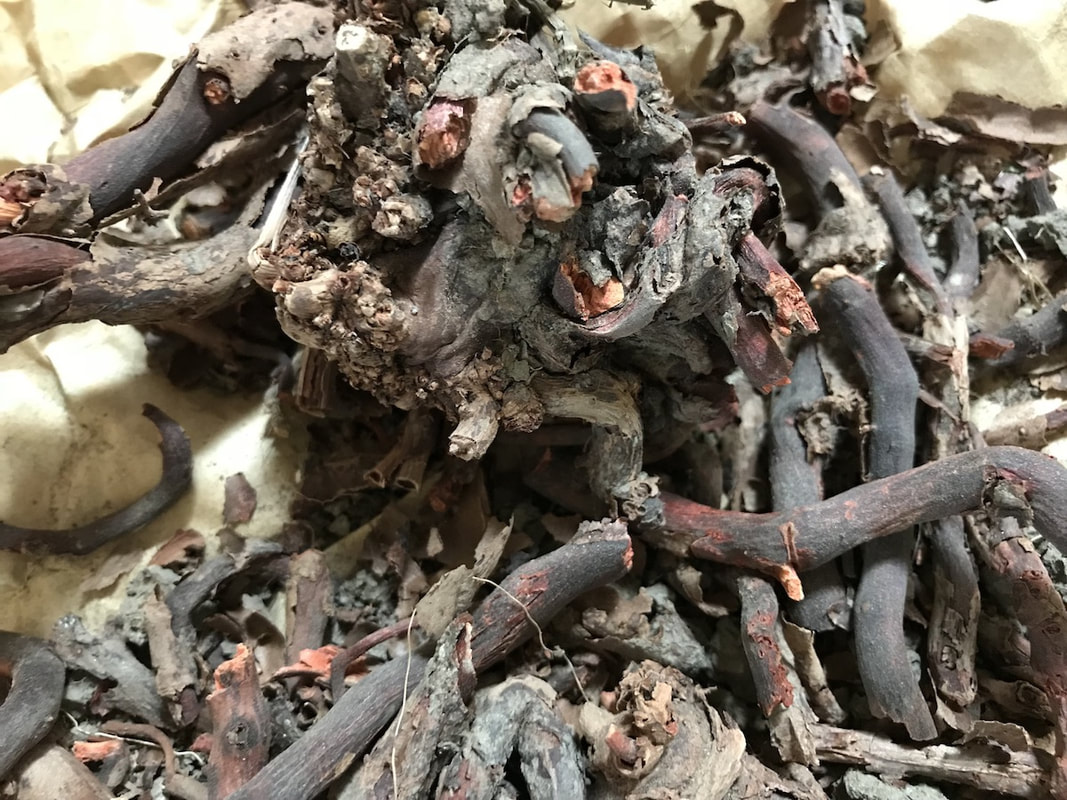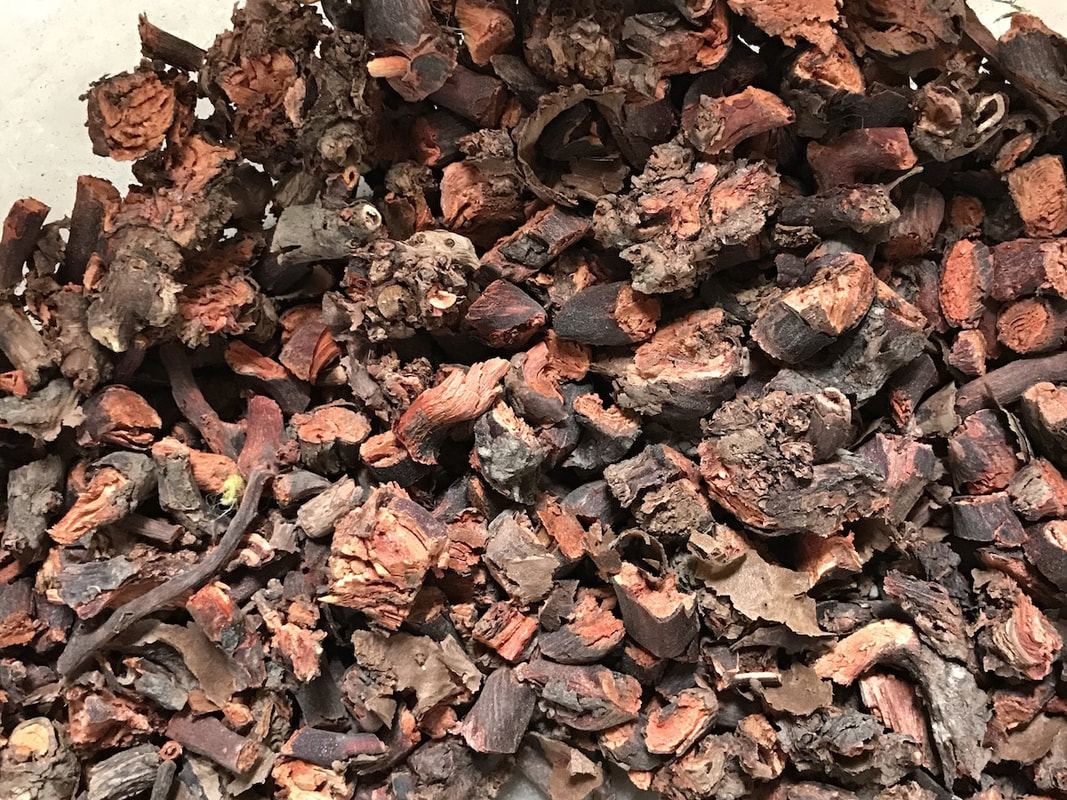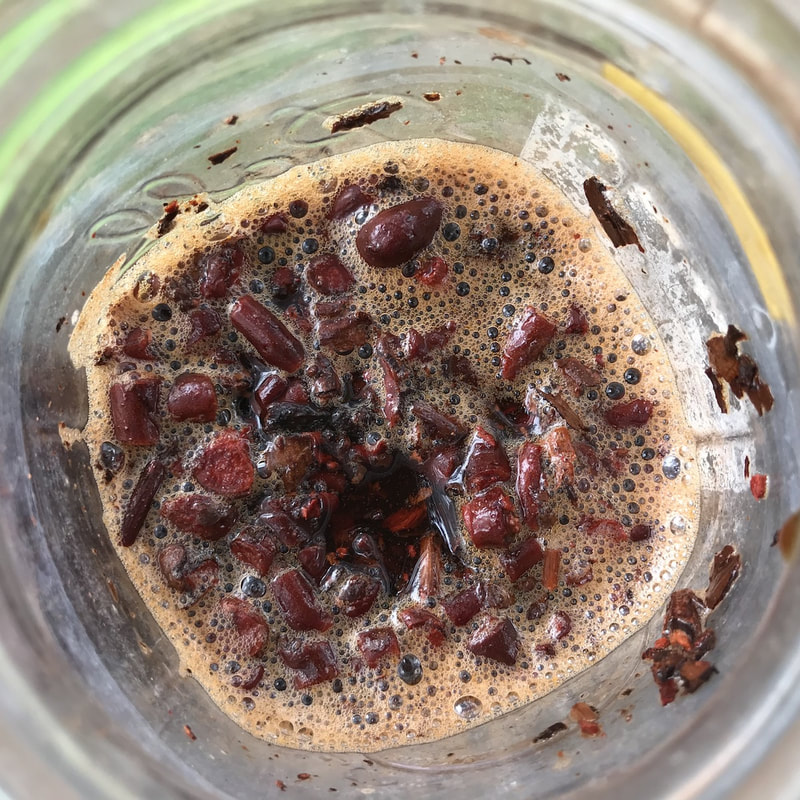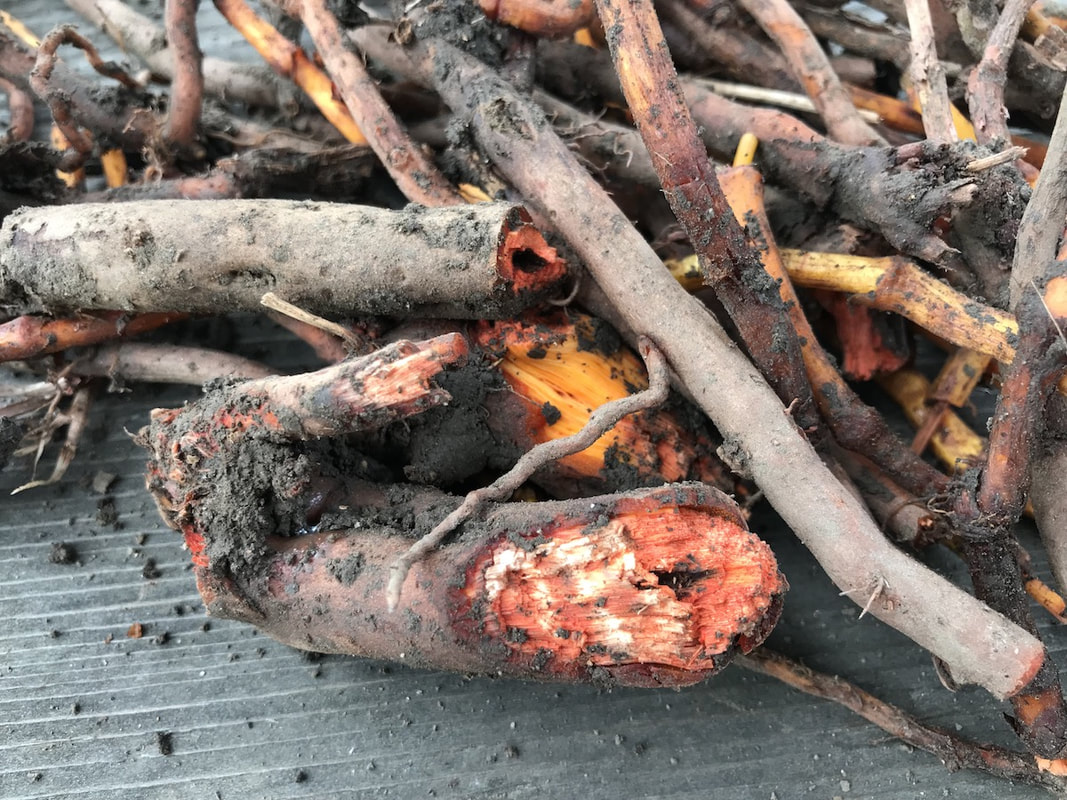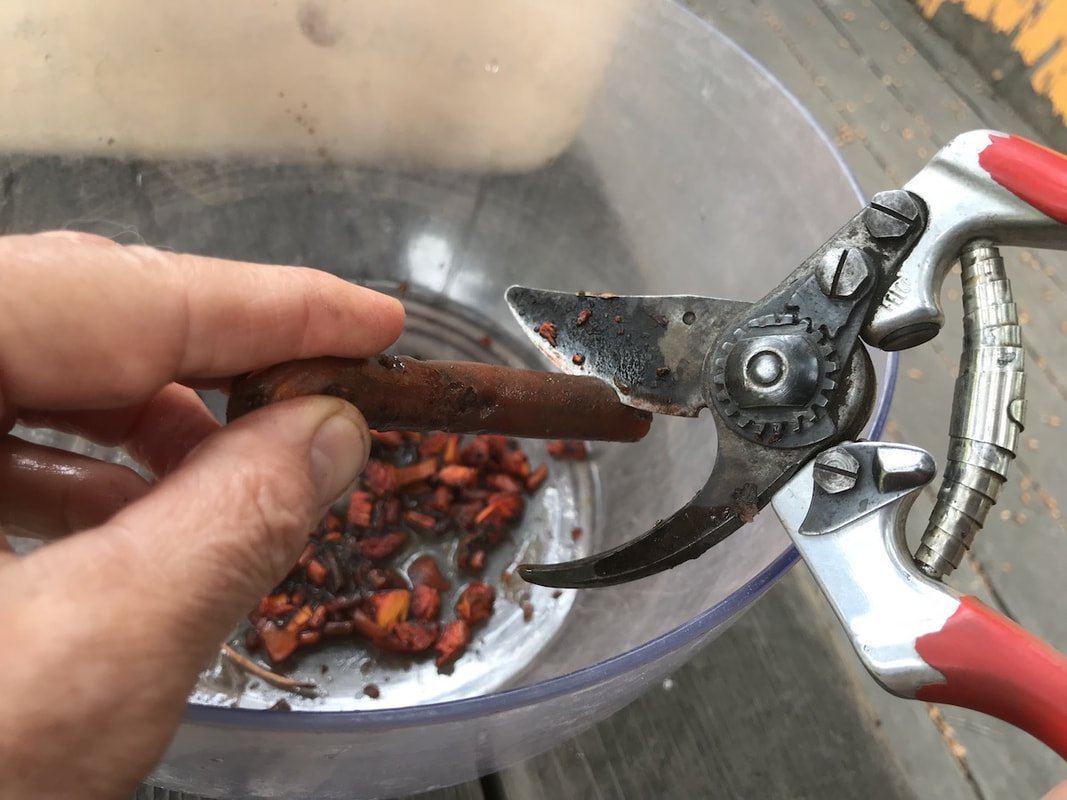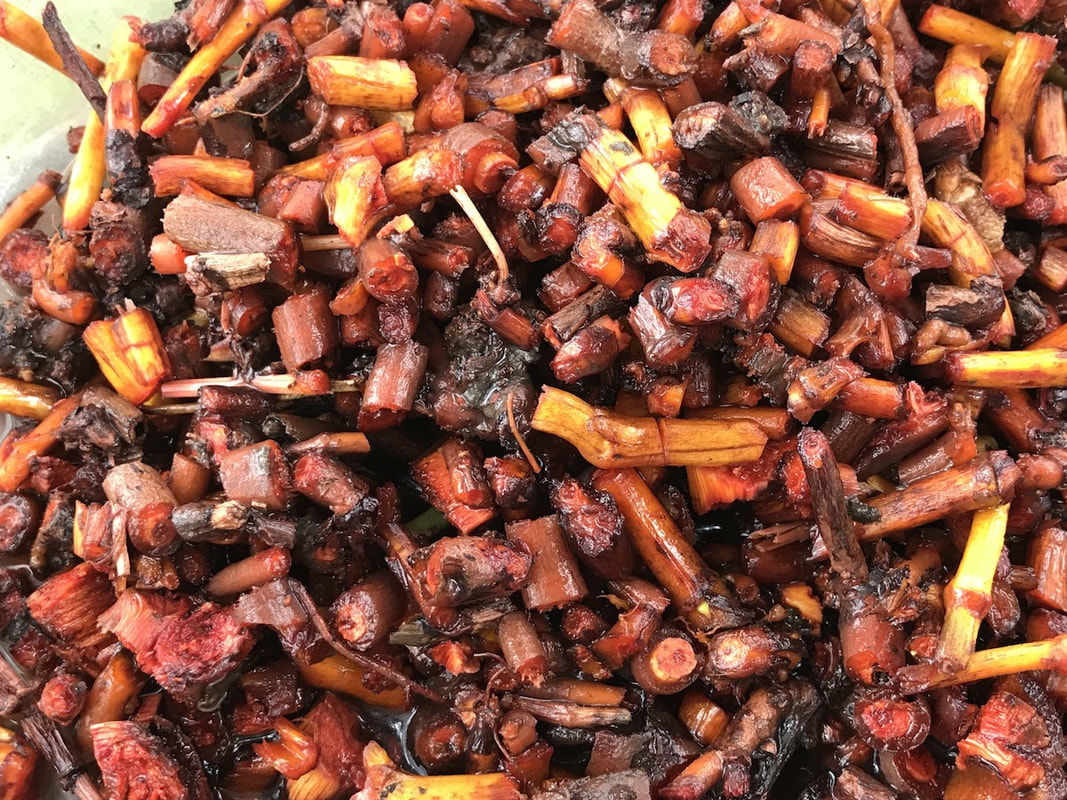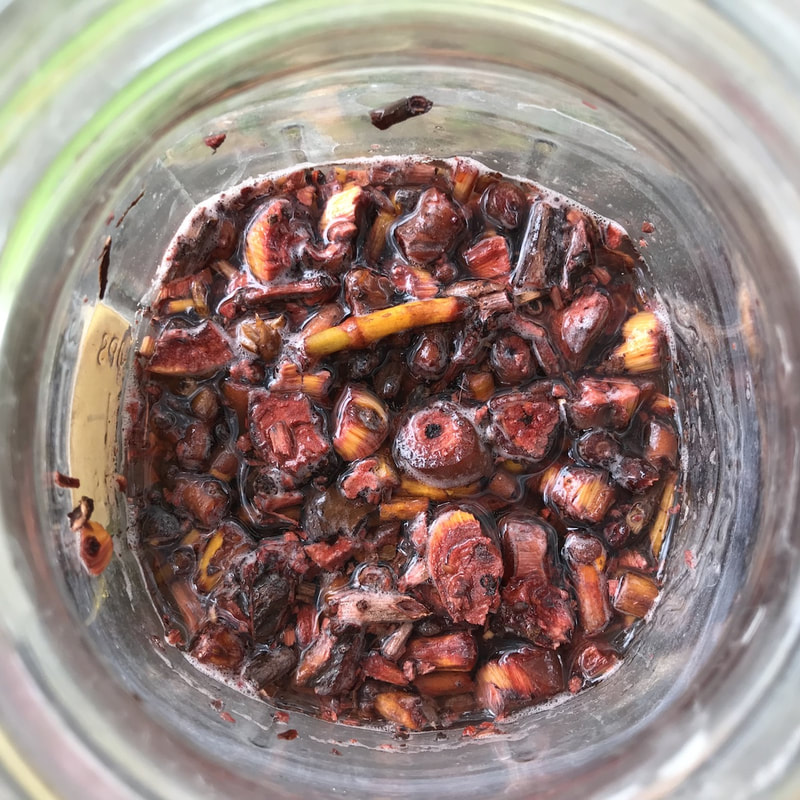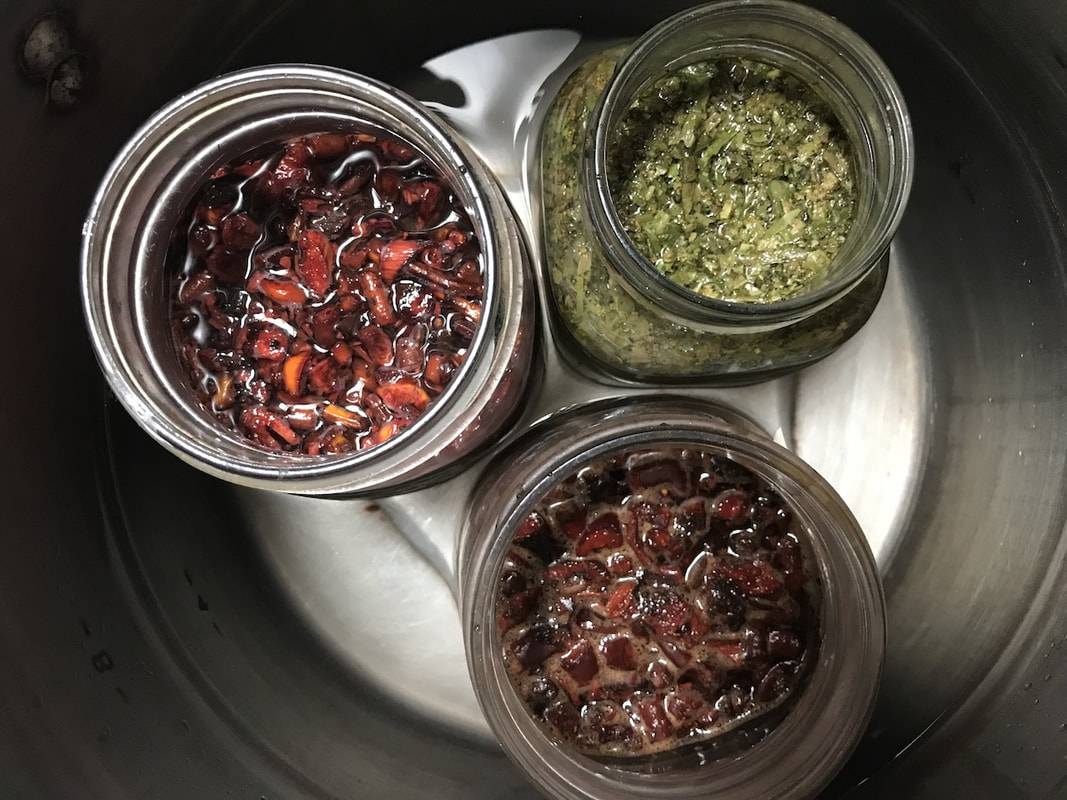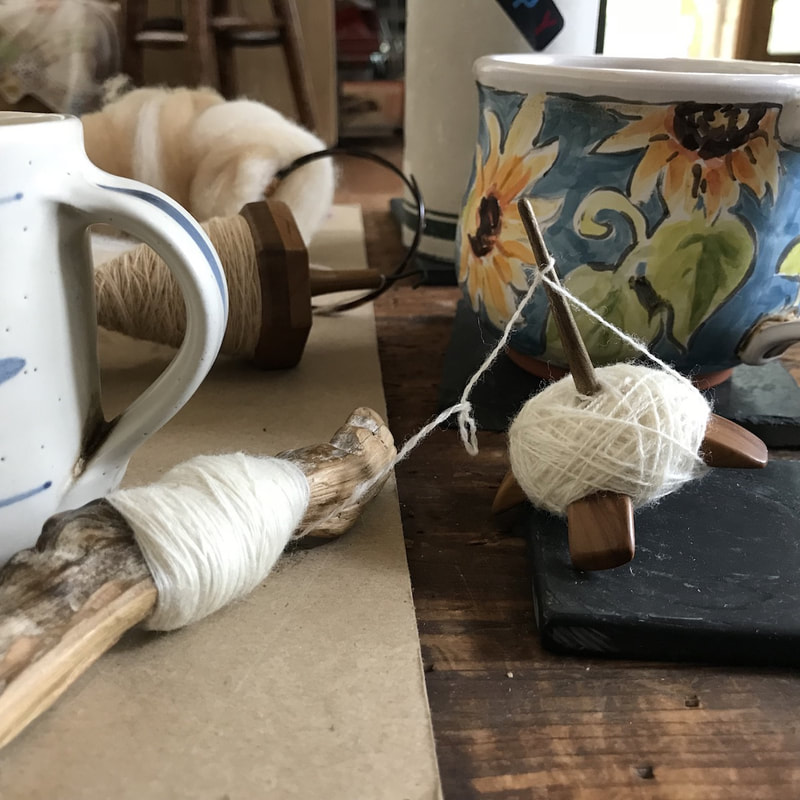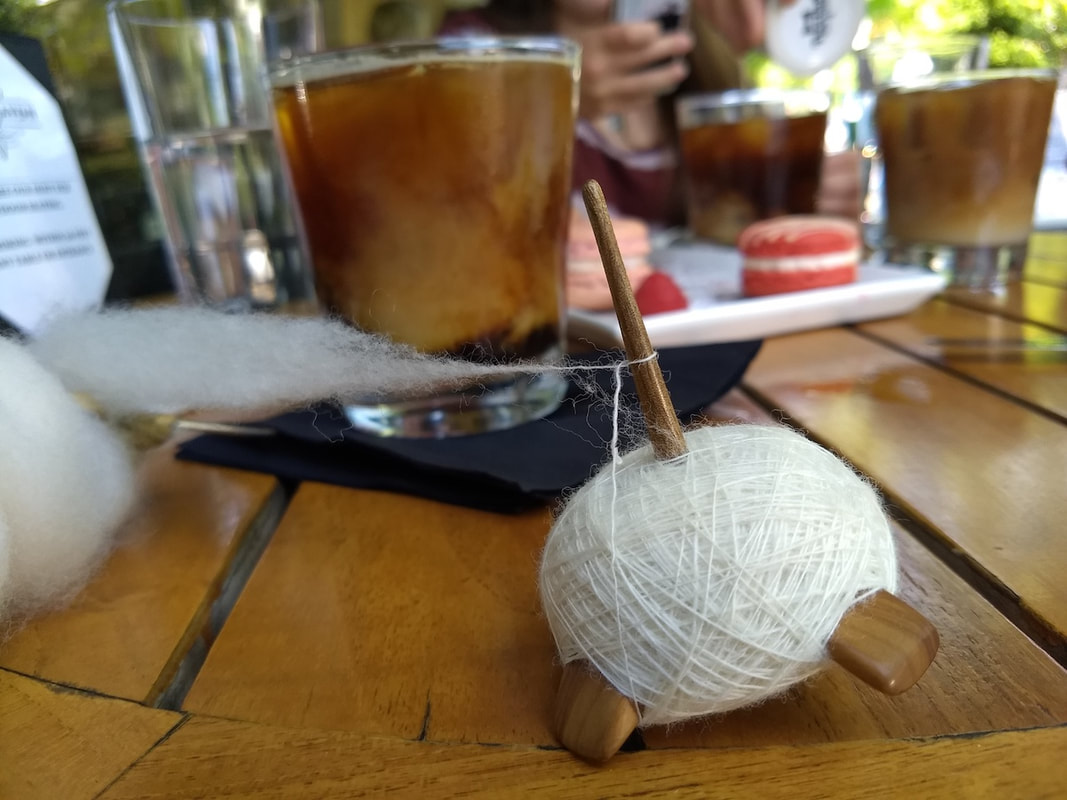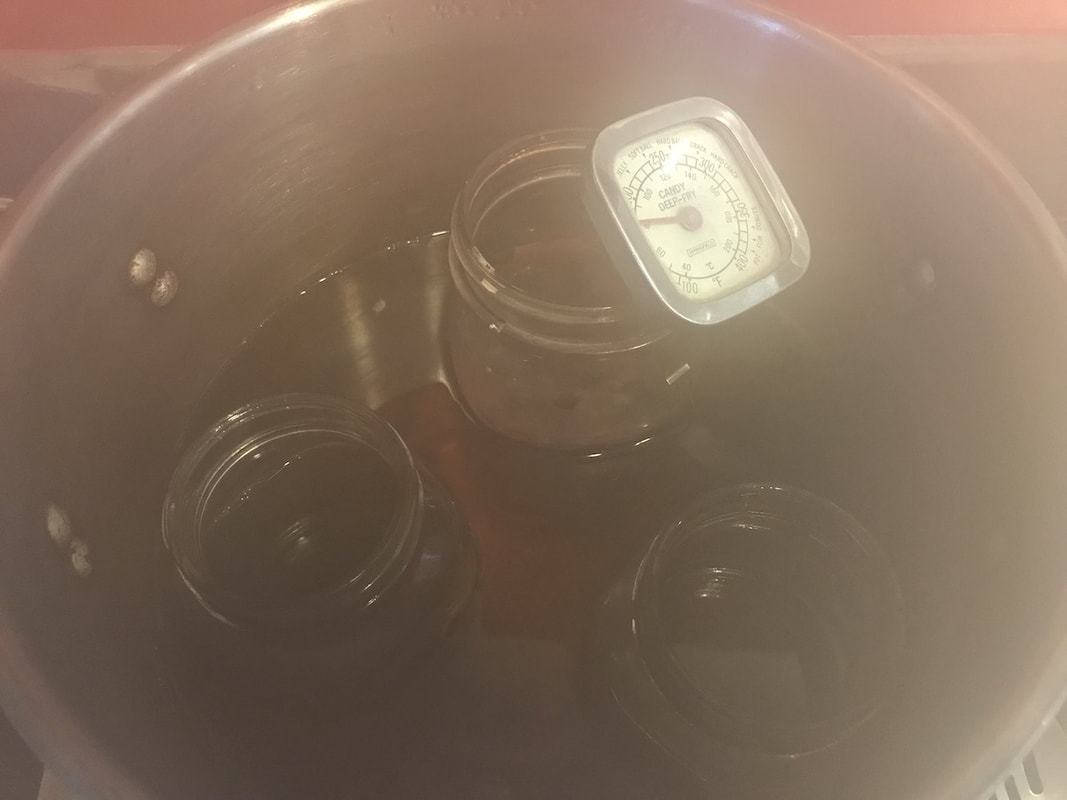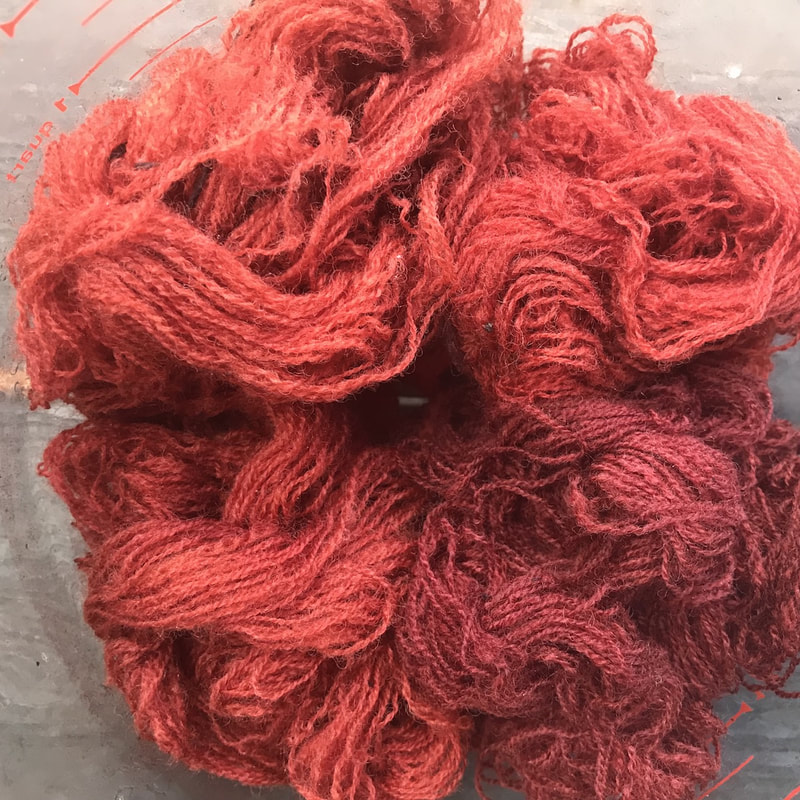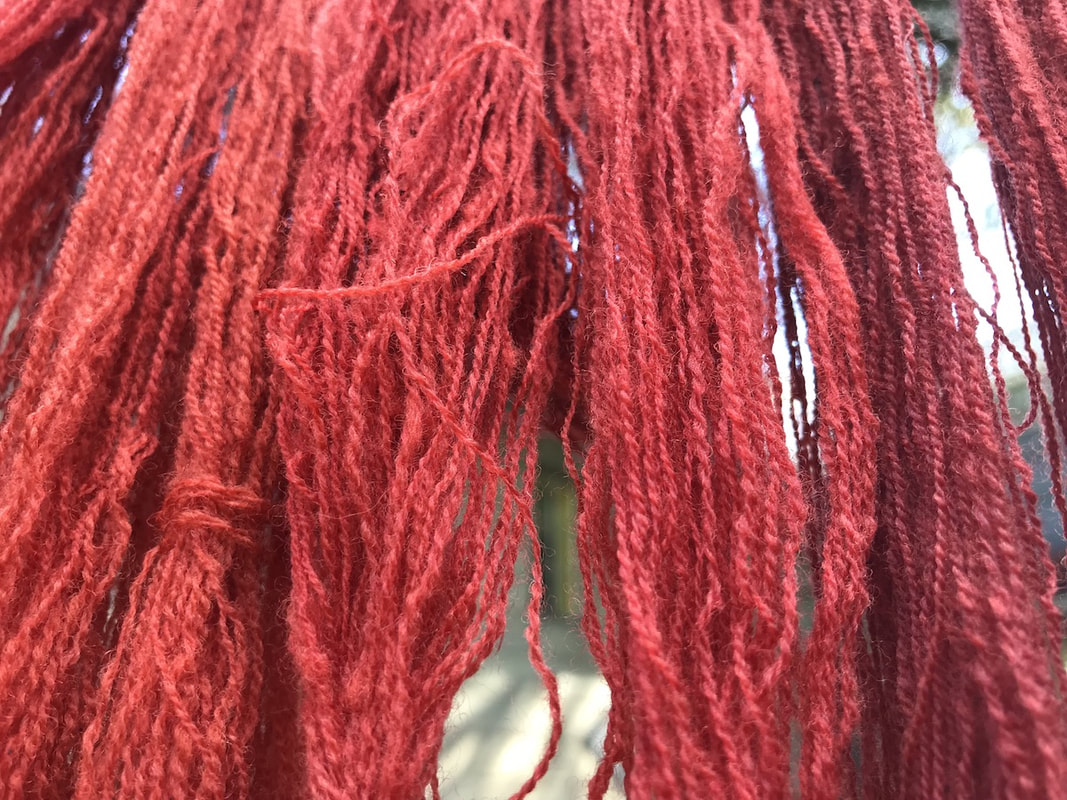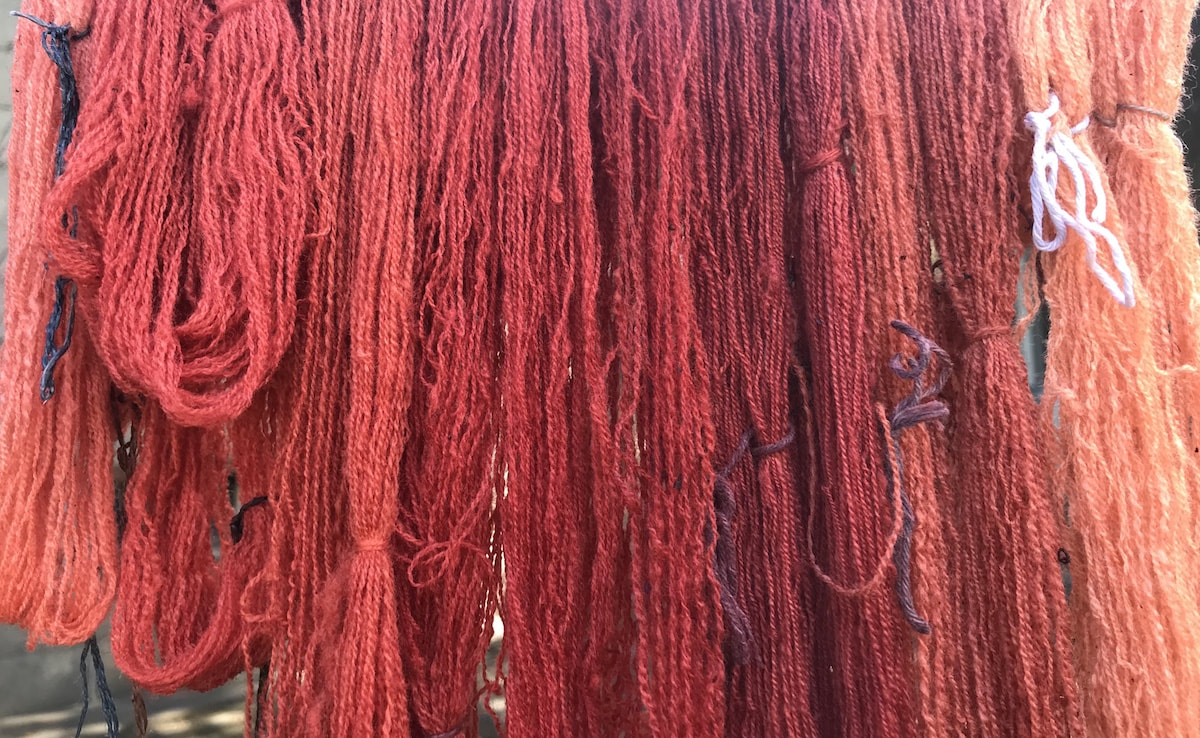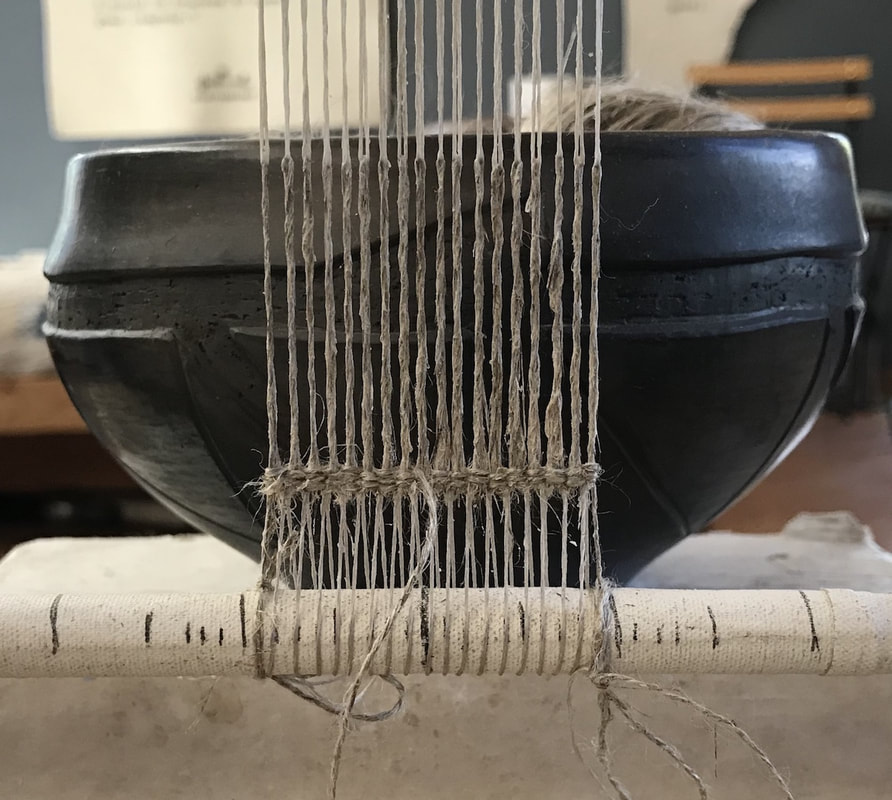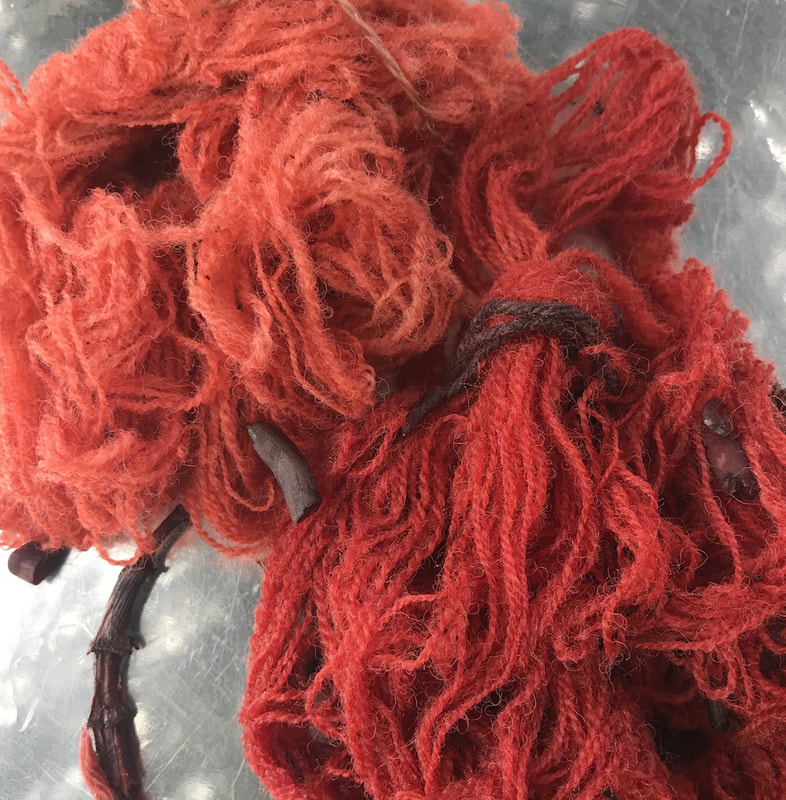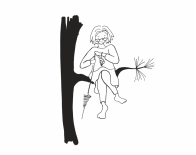This grubby collection of hastily collected
mud-encrusted roots had been drying out in an old torn paper bag
for... gosh... 15 years? More?
I'd planted the madder seeds sometime in the 1990s--
the sticky leaves and stems scratching bare arms
and clinging to small boy clothing
when my 28 year old son was
a significantly smaller person than he is now--
and I remember being so impatient,
first for it to grow,
then with its unpleasant and voracious character.
Finally I dug out a few roots,
stuck them in a bag,
and forgot about them.
or so said Michelle Whipplinger
at the 'RED' workshop I took from her in 2000
at the Color Congress in Ames Iowa.
"It takes time," said Michelle,
"for the Alizarin to reach its maximum potential"
(something about sugars turning to starches
that I could probably look up to clarify, yet won't right now...)
But
this pile of sticks did not look promising.
broke the big bits apart,
cut them into the smallest chunks I could manage
with my not very sharp secateurs,
and dumped them into a jar to soak.
Without a dye-dedicated blender to puree the softened chunks
the color would not be terribly strong.
But so what?
It was just an experiment.
I'm a half-assed, seat-of-the-pants dyer--
and already making a big wet mess--
I might as well dig up some fresh roots
and try them too.
there are two things you're not supposed to do:
1. dig the roots in the spring/ summer in the midst of the growing season
2. use them right away.
(well I was on Sunday-- two days ago).
The madder plants were encroaching
on the ripening raspberry patch
and raspberry canes are prickly enough without
having to push one's arms through sticky madder leaves.
I was ready to hack them back--
and why not make a few exploratory stabs with a shovel
at the same time?
(and a little dry weld into a third just because).
After an overnight soak they all went
into a hot water bath to simmer and soften.
Weld is fine being simmered more directly
but this double boiler-ish jar method
is an easy way to keep the temperature
of the madder from climbing into the 'brown' range.
I filled just one more Kuchulu spindle with white yarn,
then plied it while listening to the A Playful Day podcast
(broadening my natural dye rainbow during Pride),
before alum mordanting my pile
of two ply "tea" skeins
because most were spun
over cups of tea with friends.
This functional 10 gram Turkish spindle
(made by Ed Jenkins)
lives in my purse, it is also ever ready
for long lines at the Post Office
and to keep my hands
from the otherwise inevitable
napkin-shredding.
Photos of mordanting (or mordanted) yarn
are rarely interesting.
And anyway, I forgot to take them
so have none to bore you with.
Nor, alas, did I document the dye extraction process.
But both are pretty standard.
Mordant: Alum at 10-12% WOF and Cream of Tarter at 5- 6%
Dye extraction: soak, simmer, pour off, soak, simmer, pour off.
As mentioned, I try to keep the simmer temp about 160 F ish
to avoid brown tones in the red.
and then-- voila-- red yarn!
I kept the first and second extractions separate:
the skein on the lower right was the first extraction from the dry madder
and is significantly darker even if this photo doesn't really show it.
The other three are the second extraction from the dry madder
and the first and second from the fresh.
There was some variation among these,
but actually less than I expected.
What I also didn't expect,
was how un-orange the color is.
always with purchased flakes
or extracts (once they became available)--
everything carefully calculated, weighed and measured--
and there have been some pretty spectacular colors.
How not with this marvelous dye?
But because so much available madder
is R. cordifolia rather than R tinctorium,
the color often leans well into the orange range.
But this yarn does not.
Half-assed, casually measured, fresh or dry,
R. tinctorium is something else again.
pausing between sentences
to give things a stir, or a rinse,
to hang the skeins on the line to drip,
to oooh and aahhhhh,
or take another photo.
Just added the one below:
first skeins and the first exhaust from the same jars.
The main thing I'm noticing?
The colors on the fresh madder skeins
are brighter, clearer, and slightly less orange
than the dry.
Anyone have thoughts on this???
and got distracted.
But I guess now I know
what this little four selvedge warp
has been waiting for.
(sorry, there have been a lot)--
two more exhaust skeins casually tossed into the jar with
what I thought were the well-extracted fresh roots.
How gorgeous is THAT????
